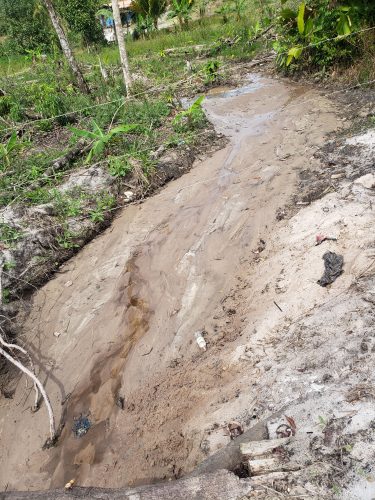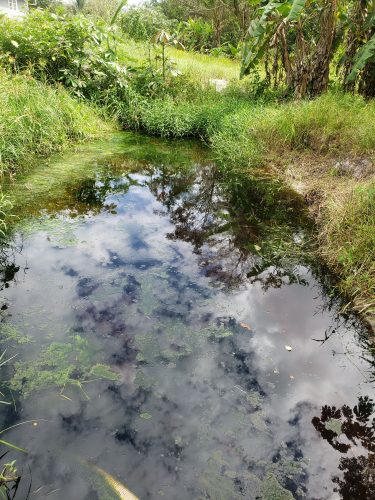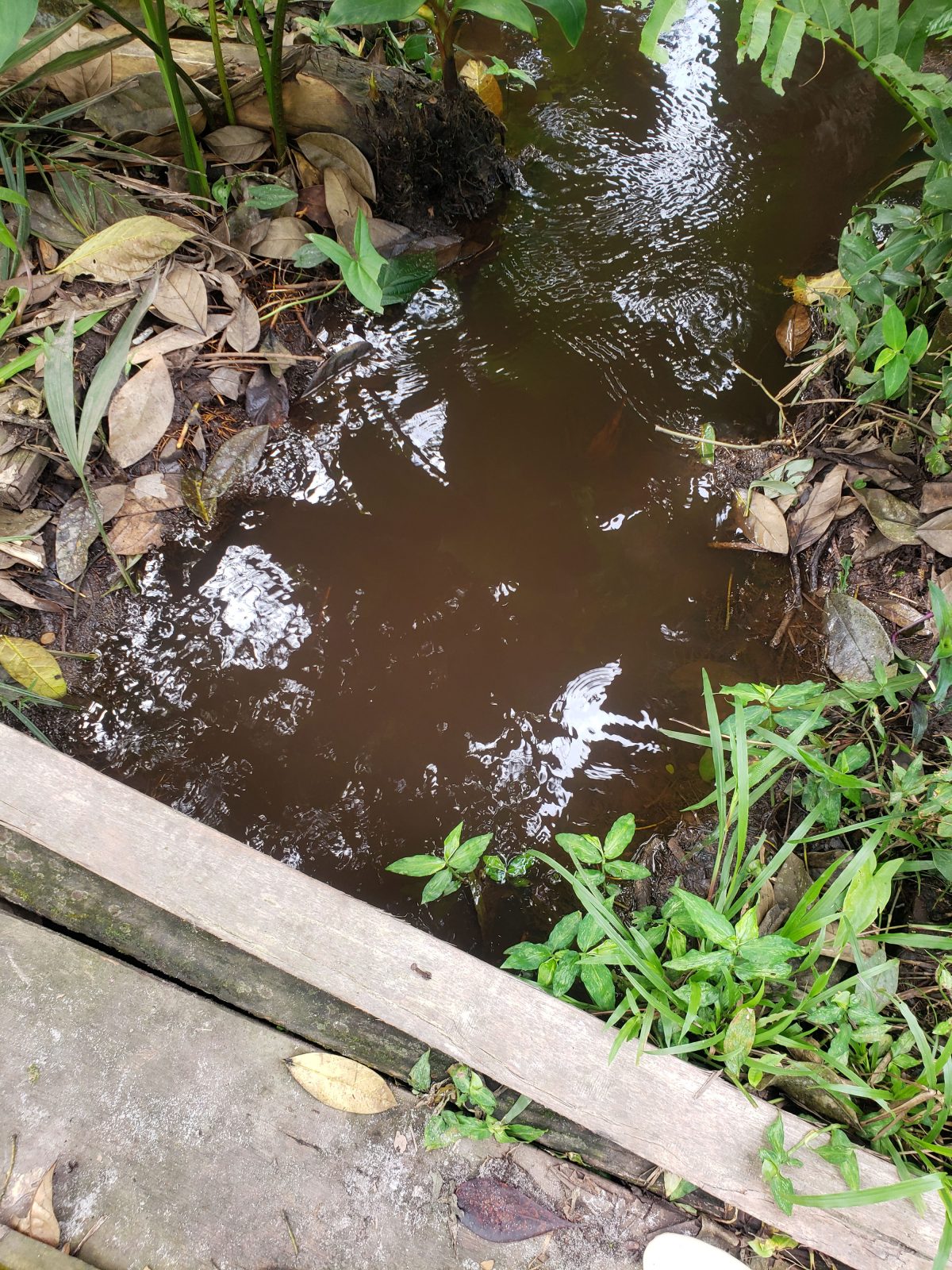Around sixty residents of Yarrowkabra, on the Linden/Soesdyke Highway face the permanent loss of access to water from a spring because of sand mining in the area.
The spring that supplies water to the community for consumption and domestic use has been contaminated as a result of sand mining for almost a year now.
Last year the residents met with Minister within the Office of the Prime Minister, Kwame McCoy, during an outreach and highlighted the contaminated spring. And according to the village chairperson, Shanti Scrance, the community was promised pipelines and tanks during that outreach.

Following further governmental interventions, on February 18, Minister within the Ministry of Public Works, Deodat Indar, delivered 60 water tanks to Yarrowkabra, but the question remained, where will the residents get water from to fill the tanks? The people were depending on the spring for water, now they are being forced to depend on rainfall, which is unpredictable. The spring was used as their main source of water for many years. Some people walked the route for an hour and a half just to use the spring when it was pristine.
Stabroek News last week met with some of the residents at Yarrowkabra including the village chairperson. She explained that the spring became contaminated when the sand extraction in the area began. The source of the spring is situated close to the path used by sand trucks, and is almost dried up. Further into the village, a part of the spring still exists but it is in a contaminated state.

Scrance told the village that she was informed about President Irfaan Ali’s visit to Kuru Kuru on January 18 and decided to attend the meeting to highlight the issues faced by her community including the contaminated spring. She related that she proposed that a ‘water well’ be sunk for the villager but instead was told about the water tanks which were eventually delivered on February 18. The chairman added that the residents are grateful for the tanks but are left to wonder, since the source of water needed to fill the tanks is still unknown. She suggested that perhaps the minister could visit the village to properly engage the residents about alternative ways for them to access water which they have already explored, and for which they need additional help and equipment.
The chairperson added that she was happy when Minister Indar came and engaged the residents about the water tanks. However they are seeking other developments that will lead to a potable and convenient source of water as well as proper facilities that will better their lives.
“We does gah buy water and it’s costly because not everybody can afford to buy water, I does struggle to get it sometimes much less other people. I grow up right here, we drink this water we cook with it and do everything. But since the sandpit come and it messed up, that’s how it is so we can’t use it anymore. I was so happy when Mr. Indar come. We still got to depend on the rain, if the rain never fall… well. If this water [the spring] was still clean we didn’t mind, we could of use it to fill the tanks. At least if we get a well that would be good. I have a pond there that I was trying to work on but it couldn’t complete it because we need like an excavator but I was saying if they could of help we could put a well there to help everybody. The water is from underground. We need help.”
One of the alternative sources that was shown to Stabroek News was a pond that residents began digging that filters the other part of the spring that is contaminated. However if this pond is excavated properly, as the residents explained, they can access water from underground and the spring.
Victor Valenzuela, a father of seven children who has been living in the community for five years, told Stabroek News, “The water used to use for everything, wash, cook, clean and drink. One year now since it deh so, right now it deh in a deplorable state. We depending on the rain, only when rain fall we get water.” Valenzuela added that his family would walk one and a half hours to another area called Long Creek to wash their clothes and take home some water for other domestic uses. The man described the situation as “hard” since it is now more difficult for them to access water for their survival.
During the group discussion another resident noted, “The thing start dry up, is nah spring no more. Yuh know how much people affected by this? The whole community.”
The other residents shared the same sentiments about the issue as they pleaded for help, “We are Guyanese too, we need things too.”
On January 21st, Indar engaged residents and sand pit operators at Tower Road, Yarrowkabra on issues affecting the Soesdyke-Linden Highway community.
A release from the ministry said that Indar’s intervention follows a commitment by President Ali at an outreach on January 18 to remedy the conflict between the sand pit operators and residents.
At the January 21st meeting, the release said that it was decided that approximately 60 households in the community will benefit from water tank distributions. This was meant to alleviate concerns that the sandpit operators may have contaminated a spring used for residential water, the release said.
Additionally, Indar stated that the sandpit operators will receive official correspondence to warn against the use of the community’s roadway for trucking activities. The Minister said the indiscriminate use of the roadway will not be tolerated since it negatively impacts the residents. .






